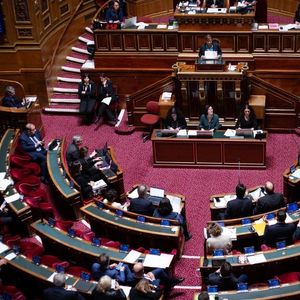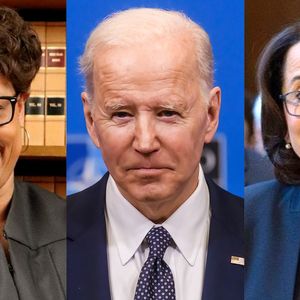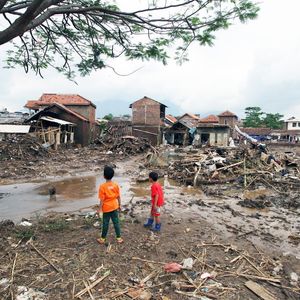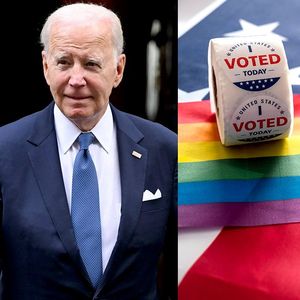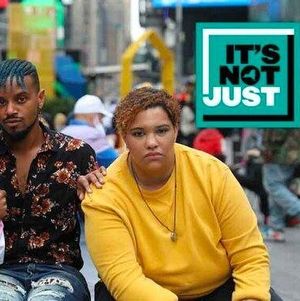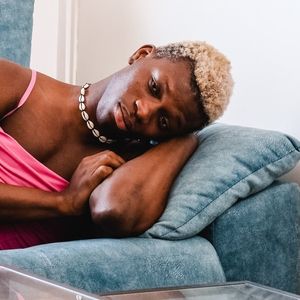I couldn’t drive fast enough. Salt Lake City, where I lived for all of my then 22 years, was disappearing in the rearview mirror of my Ford Ranger. The road ahead, a desolate stretch of Interstate 15, promised deliverance from the “love the sinner, hate-the-sin” rhetoric that pumped through the dominant culture of Salt Lake City, where as a lifelong Mormon I was taught that being gay was a sin next to murder. I was on my way to a new life in Los Angeles, away from the overprotective arms of the snow-capped Wasatch Mountains. Now, it’s eight years later, and Salt Lake City is pulling me back, as all hometowns eventually do. But instead of searching for a way out, I’m looking for a way back in as a well-adjusted gay traveler, hoping the city has changed as much as I have. My arm dangles out of a rental car window as I drive from the airport to check into the unexpectedly cosmopolitan Hotel Monaco in the heart of downtown Salt Lake City. The crisp October sky signals that it’s just a short time before the imposing mountains once again don coats of white powder, drawing in hordes of out-of-state skiers and snowboarders.
With less jaded eyes I can clearly see that this metropolitan area of 1.8 million has made significant progress since the world came to town for the 2002 Winter Olympics. New light-rail lines, gourmet restaurants, and big-city development projects have enhanced downtown Salt Lake City’s cachet as a worldly town set within a world-class winter sports capital. Even the state’s notoriously stringent liquor laws have changed for the better. (Yes, you can easily get a drink here—even a double!) More important, the city’s queer community is surprisingly visible.
“The biggest misconception about Salt Lake is that it’s oppressive,” contends Valerie Larabee, executive director of the GLBT Community Center of Utah, which operates a small coffee shop on the western edge of downtown. Mormons live by the church’s “Word of Wisdom,” which dictates against drinking coffee or alcohol. Despite such strict dogma, many outsiders find Mormons surprisingly tolerant and welcoming. Most die-hard Mormons are concentrated in suburban and small-town Utah, leaving the city itself (with its non-Mormon majority) a remarkably gay-friendly place to hang out. There’s even an unofficial gay beach on the muddy shores of the Great Salt Lake, though it’s separated from the city by 15 miles of marshes and mudflats.
The biggest draw for any traveler is the Wasatch mountain range, which rises 7,000 feet from the valley floor. With hiking trails, ski runs, even publicly accessible bobsled tracks as close as 30 minutes from downtown Salt Lake City (much closer than the Rocky Mountain range is to Denver in comparison), an ideal mix of urban exploits and outdoor adventures can be planned. No wonder Mormon leader Brigham Young declared “This is the right place” when his posse of pioneers pulled into the Salt Lake Valley in 1847.
A cold fall breeze wafts through the dry air as I wander down a sidewalk imprinted with rows of identical beehives (the state symbol, not the state hairdo). A new upscale day spa sits near the 24-hour Dee’s (think Denny’s) where my friends and I would hold court after drowning our Mormon angst in heavy drink and Depeche Mode. The streets seem more eerily clean than I remember, the blocks more perfectly square. Yet this rigid grid leads me to a laid-back Freedom of Expression Festival on the grounds of the city’s striking new public library. Gays and lesbians are everywhere. The 1894 Romanesque-revival City and County Building (which many tourists mistake as the Mormon temple) looms in the distance as Mayor Rocky Anderson, an inactive Mormon and vocal gay rights supporter, connects with a crowd of classic Birkenstock-wearing liberals.
“Salt Lake was once a monolithic community,” says Anderson, “but we’re gaining in diversity geometrically.” He’s right. Even the latest U.S. Census tallied 3,370 same-sex couples living in Utah—and they’re not hiding in the closet.
In advance of this year’s gay pride festival (attended by over 15,000 people, according to Larabee’s estimate), billboards touting utah pride 2005 lined Interstate 15, the main artery of the city. Attendance at the pride parade was second only to that of the annual parade commemorating the 1847 Mormon exodus from the Midwest to the Salt Lake Valley. Next January the Sundance Film Festival will once again attract swarms of lesbian and gay visitors to the slopes and screens of Park City (45 minutes from the Salt Lake City International Airport).
Times have certainly changed since I was 18 and my only guarantee of seeing another out gay person was by hopping a 10-foot fence into the Sun, the city’s most reliable mixed lesbian and gay bar—until it was completely leveled by a freak tornado in 1999.
I like to imagine that the bar twirled away to Oz, but many Mormons viewed the over 100-mile-per-hour funnel cloud as an extension of God’s hand. Legend has it that the twister hit the Sun, went around the Mormon temple, and then destroyed Memory Grove, the notorious cruising area in a landscaped canyon adjacent to the state capital. In all likelihood, however, the tornado passed directly over the temple—its sturdy granite facade, constructed between 1853 and 1893, seems built for the eternities, which is exactly what the Mormons have in mind.
During my October visit, leafy Temple Square, the state’s number 1 tourist attraction, is teeming with thousands of fresh-faced Mormons, here to attend the church’s huge semiannual General Conference. (It’s a dirty secret, and tired local joke, that the city’s gay bars are most packed with out-of-towners during conference weekend.) I’m fascinated by the sheer oddity and grand scale of it all. Having gobbled up much of the land directly outside of Temple Square (even an entire block of Main Street), the Mormon Church’s downtown footprint seems more and more akin to Vatican City. The temple is accessible only to “worthy members,” though you can tour the domed tabernacle, home of the famous Mormon Tabernacle Choir; do research in the church’s renowned genealogical library; and wander through the two main visitor’s centers, which include interactive exhibits that explain the history and doctrine of the Mormon Church. Thankfully, the volunteer missionaries at Temple Square are not as pushy as they used to be, so visitors need not worry about being inadvertently converted.
As I stroll around Temple Square’s immaculate grounds, Mormon prophet Gordon B. Hinckley is across the street in the church’s new 21,000-seat conference center, addressing his worldwide congregation via satellite: “The powers of procreation are to be exercised only between a man and a woman lawfully wedded as husband and wife. Any other sexual relations, including those between persons of the same gender, undermine the divinely created institution of the family.” A few weeks later 66% of Utah voters will approve one of the country’s harshest constitutional amendments banning same-sex marriage. But the margin of winning will be much less than anticipated, thanks to the grassroots efforts of Equality Utah, a well-funded political action committee that will stretch their anti-amendment campaign deep into suburban Utah.
This effort is in full swing during my visit, and I’m surprised at how much more politically active the community has become since I left. Well-preserved Victorian homes, many with rainbow flags and no on amendment 3 posters in their windows, line the street on my approach to the Coffee Garden at the gay-popular “9th and 9th” area (900 South and 900 East—all street numbers radiate from Temple Square). I stop in for coffee with an old friend, who speaks almost breathlessly about why he loves the city despite its red-state politics: “No matter what happens, we’re making a big difference by speaking out on a very human level about gay rights. We’re alive and well here. This is the perfect place to live because there’s enough nightlife, enough restaurants, even theater—and the mountains and ski resorts are so close. You go to the Gateway Center [a big outdoor mall downtown] and guys are holding hands, girls are holding hands.”
I realize this city has indeed changed as much, and as little, as I have. I’m no longer running away from the city, or my past.
On the return flight to my home in Los Angeles, as the setting sun glints off the Great Salt Lake, I spot the break in the mountain valley that released me to California so many years ago. I can’t help but wonder what life would have been like had my own exodus never occurred, but then I see that moving away was the only way I could have appreciated the extraordinary social changes that swept through the city in my absence…like another unexpected tornado.
ESSENTIALS
ACCOMMODATIONS
Moderate: Set in a 1924-built renovated 14-story building on downtown’s Main Street, the Kimpton Group’s Hotel Monaco (15 W. 200 South, 800-805-1801, $109–$325) is Salt Lake’s most gay-popular hotel, featuring 225 eclectic rooms, all with oversized beds. Many rooms afford sweeping views of the downtown skyline and surrounding mountains. (During October and November 2005, Kimpton will donate a portion of its proceeds from each reservation to the National AIDS Fund.) Located steps away from downtown’s best restaurants and theaters, and just a few blocks from the city’s hottest gay bars, Peery Hotel (110 W. Broadway, 801-521-4300, $109–$199) offers 63 unique rooms and suites (most with canopy beds) in a 1910 building that was completely renovated with period furnishings in preparation for the 2002 Winter Olympics. The hotel is promoting their gay-friendly reputation with a 10% discount for gay and lesbian travelers. Expensive: The city’s preeminent luxury stay, Grand America (555 S. Main St., 801-258-6000, $209–$329), exudes old-world decadence (chandeliers from Murano and Milan, Italy; English wool carpets; Italian marble bathrooms; etc.) and offers a full service European-style spa. Their daily afternoon tea service (2 p.m. to 5 p.m.) is popular with well-heeled Salt Lakers. If you want to sleep within spitting distance of the ski slopes, stay at the Cliff Lodge and Spa (Little Cottonwood Canyon, Highway 210, Snowbird Entry 4, 800-232-9542, $199-389), which offers 511 well-appointed guest rooms and a world-class spa with 23 treatment rooms.
RESTAURANTS
Inexpensive: Coffee Garden (898 S. 900 East, 801-355-3425) is a comfy corner coffee and sandwich shop where gay and lesbian locals laze on vintage sofas and college students cram for exams on oversized ’50s kitchen tables. Just down the street, hot waiters in black Lycra shirts work the tables at Café Trio (680 S. 900 East, 801-533-8746), an airy and affordable Italian eatery with a great wine list (all whites and reds are the same price; get a glass for $6 and a bottle for $24). Moderate: Located on the ground floor of Hotel Monaco, Bambara (202 S. Main St., 801-363-5454) specializes in fresh seasonal contemporary cuisine, including large portions of pan-roasted and grilled prime meats. The downtown brunch scene is literally off the hook at Market Street Oyster Bar (54 W. Market St., 801-531-6044), known along with other restaurants in the local gastronomy chain for having the freshest seafood in town (it’s flown in fresh daily). Try the almond-crusted grouper with eggs benedict. Expensive: Award-winning new American cuisine and urban-chic ambiance makes Metropolitan (173 W. Broadway, 801-364-3472) stand out as the city’s most sophisticated dining establishment. Indecisive foodies can revel in their seven-course prix fixe tasting menu. Live jazz on Saturday evenings.
NIGHTLIFE
Utah state liquor laws became much more lax after May 5, 2003, improving the size of legal drinks and simplifying the process of getting into private clubs—Utah’s equivalent to bars—which you can easily enter by having someone sponsor you and paying a small cover charge, or by buying a two-week membership. Located on the dark western edge of downtown, Trapp (102 S. 600 West, 801-531-8727) is a typical billiards-and-darts bar that caters to an older gay male crowd, while the adjacent Trapp Door (615 W. 100 South, 801-533-0173), which has a new sound and lighting system to complement its crowded dance floor, is the place where the younger boys go to boogie, especially on superwild Saturday nights. The Friday night hot spot is Club Sound (579 W. 200 South, 801-328-0255), a sprawling club with four bars, a rooftop terrace, outdoor cabanas, and separate dance floors for 18-and-over and 21-and-over crowds. A more mature professional scene convenes on Wednesday nights at the laid-back Todd’s Bar and Grill (1051 S. 300 West, 801-328-8650). The politically active lesbian crowd at Paper Moon (3737 S. State St., 801-713-0678) doesn’t get in the way of such non-PC activities as wet T-shirt contests. MoDiggity’s (3424 S. State St., 801-832-9000), a popular lesbian sports bar with a younger lipstick crowd, has a new Pillow Lounge and cheap drink specials most nights of the week. Just west of Hotel Monaco, Red Door (57 W. 200 South, 801-363-6030) is a trendy gay-frequented high-octane martini lounge that seems straight out of New York or Los Angeles.
GAY INFO
Grab a cappuccino at the GLBT Community Center of Utah (361 N. 300 West, 801-539-8800), a clearinghouse for the city’s latest gay and lesbian events and information, and pick up copies of the city’s two major gay publications, Salt Lake Metro and The Pillar.
GETTING THERE
The Salt Lake City International Airport is a major hub for Delta Air Lines (800-221-1212), which operates 391 daily departures from Salt Lake City to 86 cities. Over half of the U.S. population is within a two and a half-hour flight of the airport. The airport is 10 minutes from downtown. One-way taxi fare from the airport to downtown is $14. Many hotels provide complimentary airport shuttle service.
The information in this story was accurate at the time of publication. We suggest that you confirm all details directly with the establishments mentioned before making travel plans. Please feel free to e-mail us at update@outtraveler.com if you have any new information. 



































